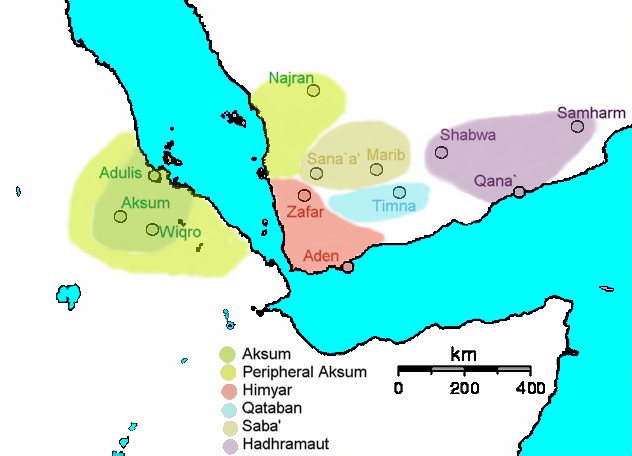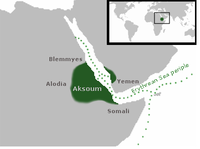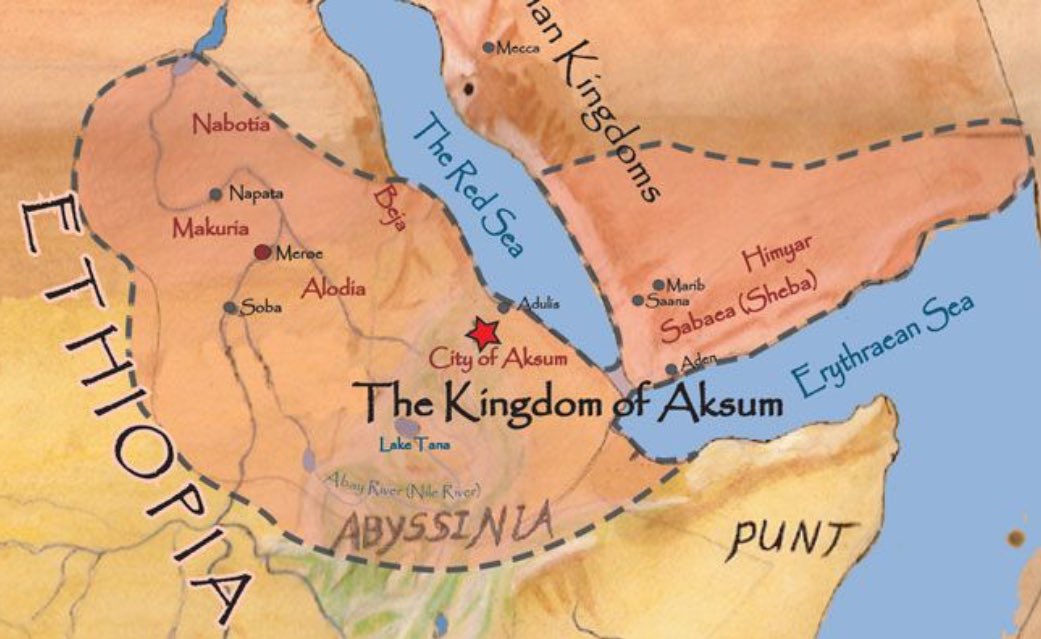Simodi
Chilling in Quljeed
Mark Hay
When British explorers at the end of the 19th century first made their way across the vast deserts of what is today Somaliland, they were surprised to find a landscape strewn with numerous and puzzling stone tumuli, graveyards, and crumbling towns. The largest of these, long known to locals but first explored by A.T. Curle while surveying the countryside in 1935, was called Amud. There, just outside the modern town of Borama, Curle found hundreds of stone houses, mosques, and courtyards, full of glass and Chinese porcelain dating back nearly 500 years. Even older trinkets have been found along the coast dating back at least 2000 years to the time of the Berberi traders mentioned by Greek and Egyptian merchants—some believe the Berberi traders were active even in the times of Pharaonic Egypt.
Somaliland is a country rich with the mostly-undocumented history of wealthy, productive civilizations. Over the last thousand years, the country has played host to the Muslim sultanates of Ifat and Adal, Bantu hunters, and nomadic waves of Somalis and Oromo, each leaving their successive traces on the land. But the de facto independent state’s archaeological heritage has been left almost entirely unstudied, unmapped, and unpreserved.
It is also being wantonly destroyed. Though the current government’s Department of Tourism and Antiquities is devoted to preservation, the nation is hemorrhaging its heritage at a rapid rate. Compounding the problem, only a few experts in the world care about documenting and studying the disappearing traces.
By the time I visited Amud, it was nothing more than a pile of rubble in the desert. In 1982, as a conflict between the Somali National Movement guerillas and the armed forces of Somali dictator Siad Barre intensified, the countryside around Borama, the regional capital of Awdal, was ravaged. The displaced people, fleeing the conflict, drove up the hill from Borama to Amud, reversed their trucks into the priceless archaeological heritage, and knocked it apart for bricks and building materials. Although this looting escalated after the country collapsed in 1993, its roots go far back. A sheikh in the village of Boon told me that during the colonial era he used to see administrators tearing up ancient stone graves to build now-vanished roads to Djibouti.
By 2010, the Somaliland Department of Tourism and Antiquities’ former director Sada Mire had catalogued 139 historical preservation sites in the country and established a network of local guards to monitor them. But these 70 untrained guards each have up to 10 miles to patrol. Mire also attempted to pass a law blocking the sale of artifacts abroad—the measure failed. Meanwhile, she and Xavier Gutherz, an archaeologist active in Somaliland for the past decade, began to recognize a system of looting, grave robbing, and black market antiquing growing increasingly widespread and entrenched in the country. Mire and Gutherz believe that looters have established ties with dealers from Djibouti to the Arabian Peninsula and are sending a steady stream of antiquities out of the country onto the black market.
A grave robber I spoke to confirmed this. Jaama Ismaaciil has been looting graves for antiquities, emeralds and gemstones since 1988. Now he’s part of an organized network. He shows me a small pyramid he dug up recently outside of Hargeisa. It looks like a colonial-era paperweight. There are dents in it from him and his associates pounding on it with hammers, hoping to find gold or gemstones inside.
There are groups like this in every region of Somaliland, but people like Ismaaciil are just the hired muscle. The financial backers of the operation provide coordinates, a daily wage, digging materials, and a commission on whatever they find. Ismaaciil does not know where the antiquities go, or what the relics mean. He just knows this is one of the best and only ways he can make a living, which is why likely why he has no qualms openly and publicly labeling himself a looter.
In the Borama region, these looters target graves surrounding ancient hilltop cities. The stone mound burials often hold nothing but bones; but dirt graves, inlaid with stone crosses are often a good target. Ismaaciil says he has found golden figurines of horses and ostriches all throughout the countryside, along with large deposits of gemstones. In Hargeisa street markets, vendors sell rubies, sapphires, emeralds, silver, and gold to Pakistani and Sri Lankan traders. While the street vendors likely aren’t mining these gemstones themselves (the mines in the Borama region they supposedly came from are now overrun by hyenas), it’s likely that they and the other gemstone dealers are acting as middlemen for the antiquities trade.
In other parts of the country, the looters have been equally successful. Abdillahi Jaama Ali, an advisor to the Department of Tourism and Antiquities, just barely managed to photograph numerous artifacts unearthed around Las Qoray in the far east before the looters shipped them off. One former grave robber based to the north in Zeila told me how, while searching for gold, he often used to find coral and bone sculptures. Thinking them worthless relics of past, he would smash them with stones.



^^^ Ruins in Amud, Awdal.

^^ Looted grave in Amud
When British explorers at the end of the 19th century first made their way across the vast deserts of what is today Somaliland, they were surprised to find a landscape strewn with numerous and puzzling stone tumuli, graveyards, and crumbling towns. The largest of these, long known to locals but first explored by A.T. Curle while surveying the countryside in 1935, was called Amud. There, just outside the modern town of Borama, Curle found hundreds of stone houses, mosques, and courtyards, full of glass and Chinese porcelain dating back nearly 500 years. Even older trinkets have been found along the coast dating back at least 2000 years to the time of the Berberi traders mentioned by Greek and Egyptian merchants—some believe the Berberi traders were active even in the times of Pharaonic Egypt.
Somaliland is a country rich with the mostly-undocumented history of wealthy, productive civilizations. Over the last thousand years, the country has played host to the Muslim sultanates of Ifat and Adal, Bantu hunters, and nomadic waves of Somalis and Oromo, each leaving their successive traces on the land. But the de facto independent state’s archaeological heritage has been left almost entirely unstudied, unmapped, and unpreserved.
It is also being wantonly destroyed. Though the current government’s Department of Tourism and Antiquities is devoted to preservation, the nation is hemorrhaging its heritage at a rapid rate. Compounding the problem, only a few experts in the world care about documenting and studying the disappearing traces.
By the time I visited Amud, it was nothing more than a pile of rubble in the desert. In 1982, as a conflict between the Somali National Movement guerillas and the armed forces of Somali dictator Siad Barre intensified, the countryside around Borama, the regional capital of Awdal, was ravaged. The displaced people, fleeing the conflict, drove up the hill from Borama to Amud, reversed their trucks into the priceless archaeological heritage, and knocked it apart for bricks and building materials. Although this looting escalated after the country collapsed in 1993, its roots go far back. A sheikh in the village of Boon told me that during the colonial era he used to see administrators tearing up ancient stone graves to build now-vanished roads to Djibouti.
By 2010, the Somaliland Department of Tourism and Antiquities’ former director Sada Mire had catalogued 139 historical preservation sites in the country and established a network of local guards to monitor them. But these 70 untrained guards each have up to 10 miles to patrol. Mire also attempted to pass a law blocking the sale of artifacts abroad—the measure failed. Meanwhile, she and Xavier Gutherz, an archaeologist active in Somaliland for the past decade, began to recognize a system of looting, grave robbing, and black market antiquing growing increasingly widespread and entrenched in the country. Mire and Gutherz believe that looters have established ties with dealers from Djibouti to the Arabian Peninsula and are sending a steady stream of antiquities out of the country onto the black market.
A grave robber I spoke to confirmed this. Jaama Ismaaciil has been looting graves for antiquities, emeralds and gemstones since 1988. Now he’s part of an organized network. He shows me a small pyramid he dug up recently outside of Hargeisa. It looks like a colonial-era paperweight. There are dents in it from him and his associates pounding on it with hammers, hoping to find gold or gemstones inside.
There are groups like this in every region of Somaliland, but people like Ismaaciil are just the hired muscle. The financial backers of the operation provide coordinates, a daily wage, digging materials, and a commission on whatever they find. Ismaaciil does not know where the antiquities go, or what the relics mean. He just knows this is one of the best and only ways he can make a living, which is why likely why he has no qualms openly and publicly labeling himself a looter.
In the Borama region, these looters target graves surrounding ancient hilltop cities. The stone mound burials often hold nothing but bones; but dirt graves, inlaid with stone crosses are often a good target. Ismaaciil says he has found golden figurines of horses and ostriches all throughout the countryside, along with large deposits of gemstones. In Hargeisa street markets, vendors sell rubies, sapphires, emeralds, silver, and gold to Pakistani and Sri Lankan traders. While the street vendors likely aren’t mining these gemstones themselves (the mines in the Borama region they supposedly came from are now overrun by hyenas), it’s likely that they and the other gemstone dealers are acting as middlemen for the antiquities trade.
In other parts of the country, the looters have been equally successful. Abdillahi Jaama Ali, an advisor to the Department of Tourism and Antiquities, just barely managed to photograph numerous artifacts unearthed around Las Qoray in the far east before the looters shipped them off. One former grave robber based to the north in Zeila told me how, while searching for gold, he often used to find coral and bone sculptures. Thinking them worthless relics of past, he would smash them with stones.



^^^ Ruins in Amud, Awdal.

^^ Looted grave in Amud









